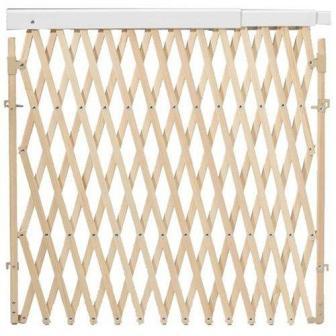 ere
are a couple of ordinary household accessories, a desk
lamp and a vanity
mirror. They are both designed to be wall-mounted
and each features
a Linear Linkage that
affords cantilevered
support plus convenient positioning at variable
distances away from the
wall. Some solvers may observe another
common attribute in
addition to the dozen hinges on scissors-like arms... ere
are a couple of ordinary household accessories, a desk
lamp and a vanity
mirror. They are both designed to be wall-mounted
and each features
a Linear Linkage that
affords cantilevered
support plus convenient positioning at variable
distances away from the
wall. Some solvers may observe another
common attribute in
addition to the dozen hinges on scissors-like arms...
To maintain a vertical lamp or
mirror while accommodating
extension along a horizontal straight line, each
configuration must be
equipped with a sliding element at the base.
 
| Below on the left is another
application of a similar
mechanism, this time designed for a child's
protective gate, typically
mounted at the top of a flight of
stairs. Again we see the equal
links and sliding elements --
in this case taking the form
of a telecoping handrail along the top. |
Below on the right is a sketch
that applies a curious
array of links having more than one size. The
mechanism accomplishes the
design objective of linear positioning with
sliding elements! That exclamation
point recognizes a singular
historical significance.. |
 
 inear
mechanisms, which date back at least to Leonardo
da
Vinci (1452-1519), have dominated the design of
uncountable inventions,
reaching full flourish in the early 19th Century with
the work of a most
gifted designer of mechanisms, James
Watt (1736-1819). For interested solvers, a
magnificent collection
of historical documents and engravings has been
published by Project
Gutenberg. Particular relevance to the Linear
Linkage puzzle will be found in Kinematics
of
Mechanisms from the Time of Watt. inear
mechanisms, which date back at least to Leonardo
da
Vinci (1452-1519), have dominated the design of
uncountable inventions,
reaching full flourish in the early 19th Century with
the work of a most
gifted designer of mechanisms, James
Watt (1736-1819). For interested solvers, a
magnificent collection
of historical documents and engravings has been
published by Project
Gutenberg. Particular relevance to the Linear
Linkage puzzle will be found in Kinematics
of
Mechanisms from the Time of Watt.
| The sketch above appeared in
the January 1968 edition
of Product Engineering, where it was
described as "straight-line
carrier device" patented by J. A. Daniel, Jr.
of Newton, NJ. A certain
puzzler clipped the article, thinking that its
analysis would make an interesting
challenge some day. More than 42 years
went by... |
Referring to the drawing below, we
shall use Daniel's
integer dimensions as follows:
Distance between supports
(green)
~~~ 16
Long link (red)
~~~~~~~~~~~~~~~~~
23
Short link (blue)
~~~~~~~~~~~~~~~~
9

GO TO
SOLUTION PAGE

|





